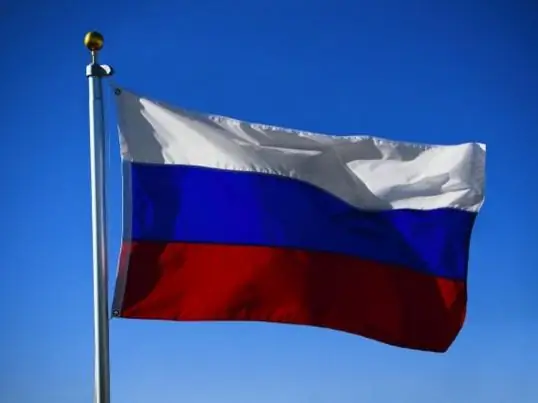- Author Antonio Harrison [email protected].
- Public 2023-12-16 07:44.
- Last modified 2025-01-22 21:44.
The national flag is one of the main symbols of the country. He crowns the houses of governments, rises to the heights of sports arenas after the victories of national teams at the largest world and European championships. The Russian state flag has its own history, and the famous Russian tricolor is defined by deep symbolism.

The flag of the Russian Federation in its modern form has been the state symbol of the country since 1991. He changed the state symbol of the Soviet era (the hammer and sickle were depicted on the flag of the USSR on a red background).
It is worth saying that the current flag is far from the first tricolor symbol in the history of our native country. The same tricolor was the symbol of the Russian Empire in the period from 1895 to 1917. Even earlier, at the beginning of the 18th century, the tricolor canvas was the trade flag of the empire. For the first time, the tricolor became a symbol of the Russian state closer to the middle of 1693, when the flag of the Tsar of Moscow was raised on the flagship St. Peter.
There are various points of view explaining what exactly the colors on our flag mean. The most popular and modern explanation says that the white stripe denotes eternal peace and undefiled purity, the blue stripe stands for inviolability and stability, and the red stripe denotes the strength associated with the enormous energy of the Russian people.
During the reign of Peter I, the meanings of the flag stripes were slightly different from modern ones. At that time, white meant a free life, blue was a symbol of the patroness of Russia - the Mother of God, and the red stripe on the flag indicated the autocracy of the Empire. Also in imperial Russia, there was an opinion that the color white means nobility, blue means honesty, and red means courage.
Now there is also a comic interpretation of the meaning of the colored stripes of the Russian flag, which says that white means a harsh winter, blue means Russian vodka, and red means the most beautiful women in the world living in Russia.






